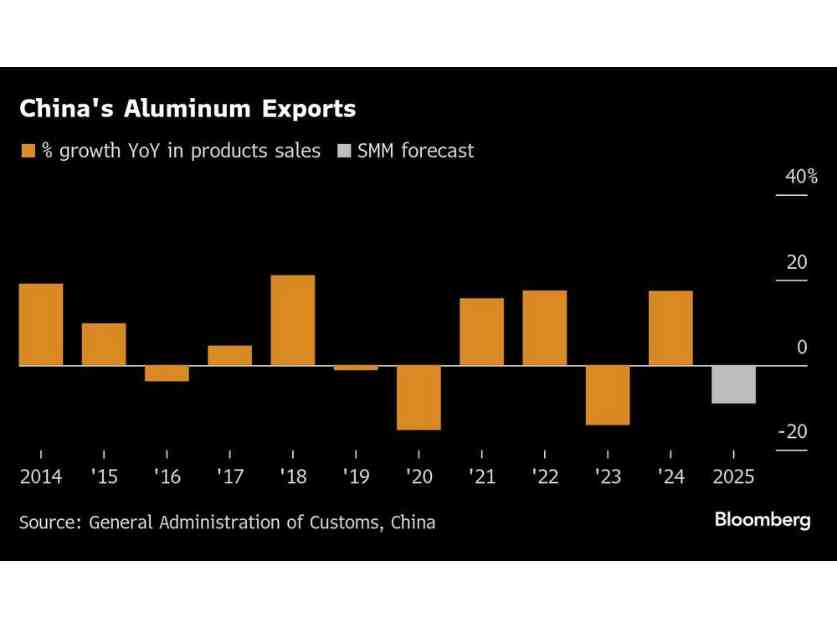China’s Aluminum Industry at a Major Crossroads
China, the world’s largest producer of aluminum, is facing a critical juncture in its industry this year. With strict limits on capacity set by the government, the country’s aluminum output and export capabilities are poised to be significantly impacted.
The Chinese government implemented a cap on annual aluminum production at 45 million tons back in 2017 to address issues of excess supply and emissions. Fast forward to today, and that limit has already been reached, with expectations that the 2024 output figures will reflect a record high of over 43 million tons.
Implications for Production and Exports
As a result of hitting the capacity cap, the growth in aluminum production is expected to slow down. This slowdown could potentially lead to a decrease in the amount of metal available for export, which could have ripple effects on the global aluminum market.
Furthermore, with the looming threat of sanctions on aluminum exports from Russia, another major player in the market, the focus shifts to China’s role in supporting international prices of aluminum.
Forecast for Prices and Demand
Despite the current stability in aluminum prices, experts like Howard Lau from HSBC Holdings Plc predict a potential drop in prices during the Lunar New Year period, followed by a rebound due to supply constraints and demand expectations.
Lau highlights the importance of structural demand growth from renewable energy sectors, which could help offset any weaknesses in other areas like the property sector, driving the need for ongoing economic stimulus efforts in China.
Shifting Strategies and Global Impact
In response to the domestic restrictions on expansion, Chinese aluminum smelters are beginning to look beyond their borders for growth opportunities. This has led to the establishment of plants in countries like Indonesia, with plans for further expansions in regions like South America and Africa.
However, challenges such as reliance on coal power and slow infrastructure development in these regions pose concerns for the sustainability of these ventures. Despite these obstacles, the global aluminum market is bracing for potential shifts in supply chains and pricing dynamics as China navigates this pivotal moment in its aluminum industry.
This humanizing touch allows readers to understand the personal impact of the story, putting a face to the statistics and regulations that often dominate headlines. By highlighting the real-world implications of China’s aluminum industry developments, readers can connect on a deeper level with the complexities and consequences of these global economic shifts.






















